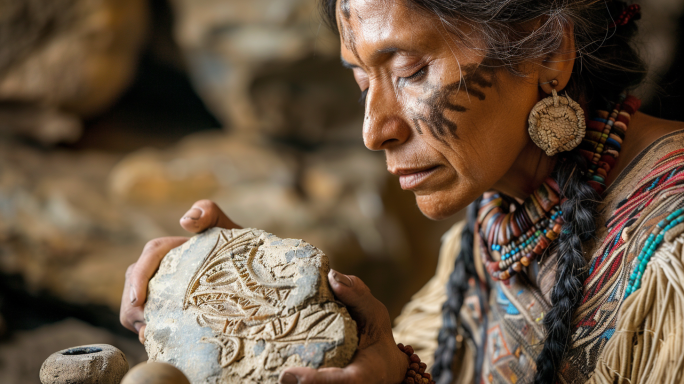Introduction
A remarkable discovery in Siberia has unveiled secrets from the distant past. A 20,000-year-old pendant, intricately crafted and preserved, has been analyzed, and scientists have extracted DNA from it. This groundbreaking finding has revealed that the pendant was worn by an ancient woman, providing an intimate glimpse into the lives of our prehistoric ancestors. This article explores the significance of this discovery, the methods used to uncover its secrets, and what it tells us about the culture and daily life of the people who lived millennia ago.
Discovery of the Pendant
Unearthing the Artifact
The pendant was discovered during an archaeological excavation in Siberia, in an area rich with prehistoric artifacts. The region has long been a treasure trove for archaeologists, yielding tools, ornaments, and evidence of ancient human habitation.
Initial Analysis
Upon its discovery, the pendant’s age was estimated through radiocarbon dating, placing it at approximately 20,000 years old. This period falls within the Upper Paleolithic era, a time when early humans were developing more complex tools and cultural practices.
The Importance of the Pendant
A Rare Find
Finding such a well-preserved personal ornament from this era is exceptionally rare. Most organic materials decompose over time, making it challenging to find intact artifacts from prehistoric periods.
Cultural Significance
The pendant is not just a piece of jewelry; it represents the cultural and social practices of the people who created it. Personal adornments like this pendant were likely used for more than mere decoration—they could have held symbolic meanings, conveyed social status, or been used in rituals.
Extracting DNA from the Pendant
Advanced Techniques
The extraction of DNA from the pendant was made possible through advanced scientific techniques. Researchers carefully collected microscopic biological material from the pendant’s surface, which was then analyzed using sophisticated genomic sequencing technologies.
The Findings
The DNA analysis revealed that the pendant was worn by an ancient woman. This finding provides a direct connection to the individual who used the ornament, offering a unique and personal glimpse into the life of a person who lived 20,000 years ago.
Understanding the Wearer
Physical Characteristics
While the DNA provides a genetic profile, it also offers insights into the physical characteristics of the pendant’s wearer. The genetic markers can indicate aspects such as hair and eye color, skin tone, and even susceptibility to certain health conditions.
Daily Life and Social Context
By examining the pendant and its associated DNA, researchers can infer aspects of the daily life and social context of the wearer. The craftsmanship of the pendant suggests a community with skilled artisans and a culture that valued personal adornment.
The Craftsmanship of the Pendant
Materials and Techniques
The pendant was crafted from locally sourced materials, using techniques that were advanced for the time. The intricate design and careful workmanship indicate a high level of skill and artistry.
Symbolism and Design
The design of the pendant may hold symbolic meanings. The patterns and motifs used could represent aspects of the wearer’s identity, social status, or beliefs.
Insights into Prehistoric Culture
Social Structure
The existence of such finely crafted personal adornments suggests a complex social structure. The pendant likely belonged to someone of significant status within their community.
Rituals and Beliefs
Personal ornaments like the pendant could have been used in rituals or held spiritual significance. They may have been part of burial practices, ceremonies, or other important cultural events.
The Broader Impact of the Discovery
Advancing Archaeological Techniques
The successful extraction of DNA from an ancient artifact sets a new precedent in archaeological science. It opens up possibilities for similar analyses on other artifacts, potentially revealing more about our prehistoric ancestors.
Connecting the Past to the Present
Discoveries like this bridge the gap between the distant past and the present, showing the continuity of human culture and the deep-rooted desire for personal expression and adornment.
Conclusion
The revelation of the wearer of a 20,000-year-old pendant through DNA analysis is a landmark discovery in the field of archaeology. It provides an intimate connection to our prehistoric ancestors, shedding light on their lives, culture, and social structures. This pendant, worn by an ancient woman, is more than just an artifact—it is a tangible link to the rich and complex history of human civilization.
FAQs
1. How was the age of the pendant determined?
The age of the pendant was determined through radiocarbon dating, which placed it at approximately 20,000 years old.
2. What materials were used to create the pendant?
The pendant was crafted from locally sourced materials, using advanced techniques for the time.
3. What does the DNA analysis reveal about the wearer?
The DNA analysis revealed that the pendant was worn by an ancient woman, providing insights into her physical characteristics and genetic profile.
4. What is the cultural significance of the pendant?
The pendant represents the cultural and social practices of the people who created it, suggesting a complex social structure and the use of personal adornments in rituals or as symbols of status.
5. How does this discovery impact the field of archaeology?
The discovery advances archaeological techniques by demonstrating the potential for DNA extraction from ancient artifacts, offering new ways to study and understand prehistoric human life.

